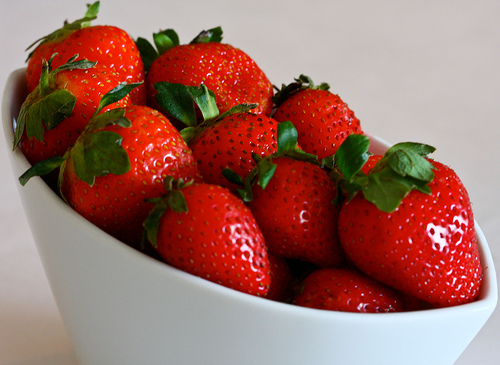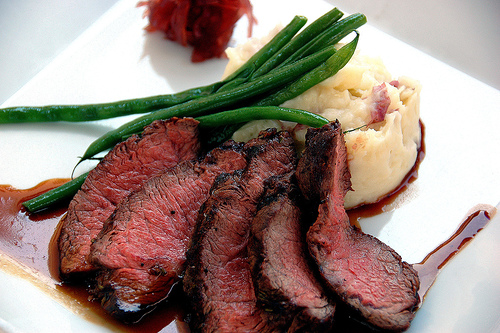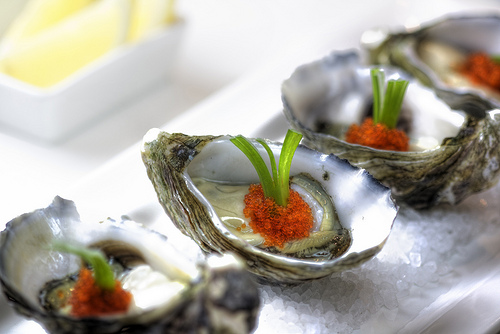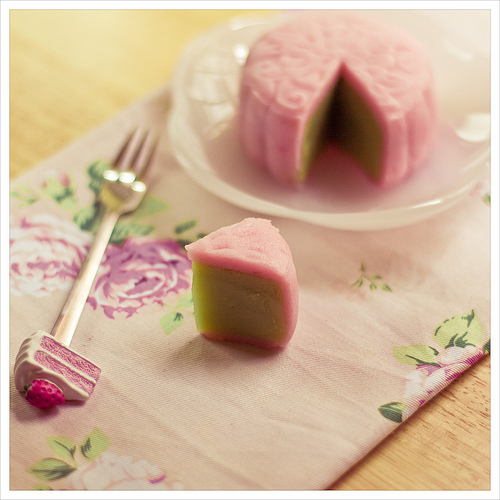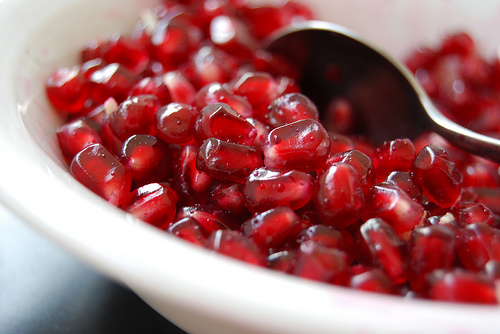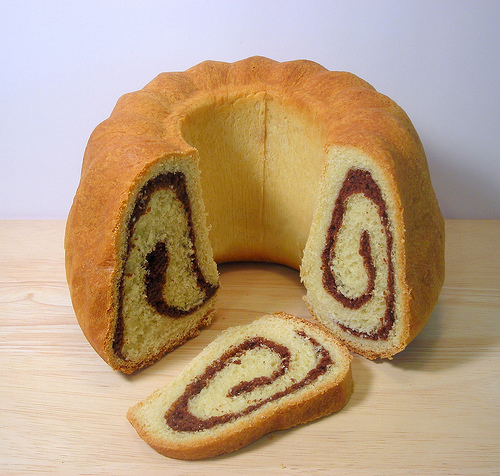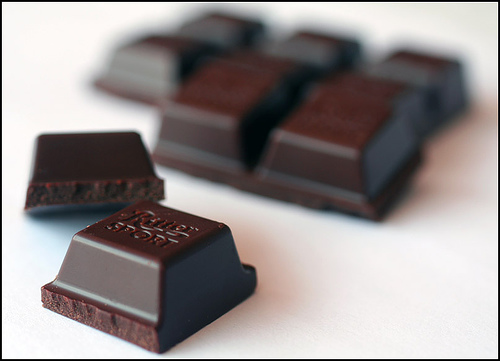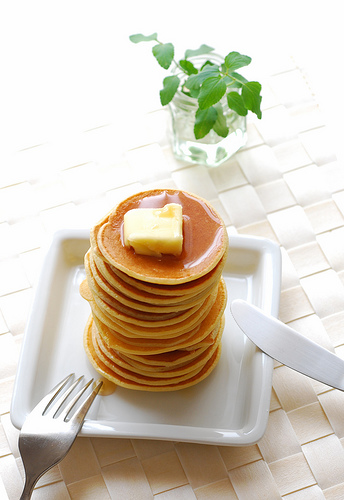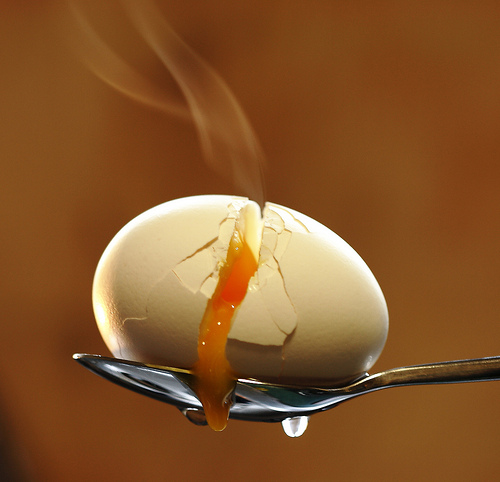Its really less expensive and MONEY WORTHY !
Thursday, September 30, 2010
Sunday, September 26, 2010
came across this :D
10 Food Photography Tips to Make It Look TASTY!
We’ve all done it before. Taken a photo of a delicious meal only to have it turn out looking ugly and not edible. Hopefully these 10 food photography tips will help you take a more tasty-looking food photo next time.
1.) Keep the background clean
Make sure there is a color contrast between the background and the food, don’t have the two be the same color or a similar shade. For example, strawberries served on a red plate isn’t going to stand out. Keep the background simple and uncluttered. If unsure, stick to a plain white background.
2.) Adjust the white balance
Adjust the white balance on your camera according to what you’re shooting. Meat should always be shot in warm tones as a blue-ish tinge under some fluorescent lights would make it look ghastly.
3.) Use natural lighting
Whenever you can, try to shoot using natural lighting. Shoot during the day near a window where you would get plenty of natural sunlight. When you must shoot at night, try avoid using flash directly on the food as it’s too harsh. Instead, use a flash diffuser or have the flash bounce off a ceiling or wall.
4.) Use a tripod
Most food photography will be done indoors, where there might not be enough lighting. Use a tripod whenever you can as it beats trying to hold very still for long a amount of time.
5.) Small details make a big difference
Don’t disregard the small stuff. Keep in mind that using nice cutlery and a clean serving plate/bowl could make all the difference transforming a nice photo to a fantastic one.
6.) Get up close
Instead of only taking photos of a full plate of food, take some macro shots too. Getting up close to your subject will bring out the textures and finer details, making it more interesting and intriguing.
7.) Cut it, slice it, dice it!
As with anything, you shouldn’t just take something for its face value. With food, sometimes it’s what’s inside that can create a great shot. I love cutting up crumbed foods for the contrasting textures. I also love cutting up cakes just so I can get the different layers.
8.) Take photos from all angles
Don’t just take a photo from a bird’s eye view, try different angles. Left, right, top, bottom. Feel free to even move the food around and come up with different compositions.
9.) Use props
Don’t be afraid to jazz up the set. Maybe a glass of orange juice to go with those pancakes? A bottle of wine in the background with your steak and mash meal? Or maybe some hundreds and thousands sprinkled around your cupcakes? Do remember to keep it simple as too many props can be distracting.
10.) Cheat if you have to
As long as you’re not planning to eat the food afterwards, there are ways to enhance your food by using some industry tricks. For example, make your food glisten by brushing on some vegetable oil. Create that ‘fresh out of the oven’ steam by placing some microwaved cotton balls that have been soaked in water. Or make perfect-looking ice cream that won’t ever melt with some mashed potatoes.
Do you have any more ideas, tips and tricks to share when it comes to food photography?
Attribute: http://www.digital-photography-school.com/food-photography-an-introduction
Attribute: http://www.digital-photography-school.com/food-photography-an-introduction
Wednesday, September 22, 2010
1001 Excuses
In commemoration of
National Heart Week / World Heart Day 2010, & SHF’s 40th anniversary,
we have started a new campaign
- 1001 excuses -
| |||||||||
Its TRUE sadly......
Do have a look :) http://www.1001excuses.sg/
Attribute: http://www.1001excuses.sg/
...............A continuation.................
Regular check-ups
Stop Smoking
Eat Healthy
Exercise
Its about time to make a lil' change, to save yourself from big problems & $$$
:D
Do have a look :) http://www.1001excuses.sg/
Attribute: http://www.1001excuses.sg/
Regular check-ups
Stop Smoking
Eat Healthy
Exercise
Its about time to make a lil' change, to save yourself from big problems & $$$
:D
Tuesday, September 21, 2010
Cuttin' Measurin' Learnin' Convertin'
F/N Practical Lesson 1 - Learnt Food Preparation Technique
1. Cuttin'
 |
| (Chiffonade)d Spinach |
Cubed Carrots
 |
| (Julienne)d Carrots |
Shredded Carrots
Sliced Onions
Chopped Garlic
Monday, September 20, 2010
Along With This to Kickstart Monday !
An Introduction of Home Economics to our students!
Attribute: http://www.youtube.com/watch?v=vjvJHsJD8ic&feature=related
Something to Show Our Students One Day - TOPIC: Limiting Fast Food
Attribute: http://www.youtube.com/watch?v=zc_z623Wsro
1,005,101 views on YOUTUBE
Food Inc.
!_! Stunning Right !One reason we do what we do here is to ask question like “Are we eating food or food eat us?” Apparently a lot more for us to learn about our food. Welcome to the new century of capitalism agriculture – whoever controls the food chain controls us
Friday, September 17, 2010
e-learning with e-Photo, the FAB way
Attribute for Icons: http://www.iconfinder.com/icondetails/15494/128/smiley_wink_icon


Attribute for Icons: http://www.iconfinder.com/icondetails/15494/128/smiley_wink_icon
4. Health Promotion Board
5.United States Department of Agriculture U.S.D.A.
Nutrition Information- Activities to get them engage
Nutrition Essential: teaching tools for teachers!
One of the Spotlights: Challenge: Recipes for Healthy Kids
FOOD PHOTOGRAPHY!!
Attribute:
My Views:
My Views:

3. Asian Food Information Centre (A.F.I.C.)
Recent Journal Articles On Food & Health
Health & Nutrition - related Information
Food Facts Asia - Latest Research Findings!
Asian Food With Modified Recipes and Food Compo. Table


My Views:
- The Good: Journal Articles for Coursework Part , Asian food recipes modified and food composition table available is a plus. Bonus, Food Facts Asia presented by A.F.I.C. are like survey finding that is really up to date, useful in the RESEARCH & DEVELOPMENT for COURSEWORK!
- The Bad: Wordy, need a little patience
Attribute: http://www.afic.org/consumerresearch.php
Attribute for Icons: http://www.iconfinder.com/icondetails/15494/128/smiley_wink_icon
4. Health Promotion Board
Educational Materials/National Health Survey !
Health Tools
Looking for healthier dining options near you? Try buUuk!
My Views:
- The Good: Guaranteed Students Ideal Web page. Educational materials like national health survey plays a vital role in the R&D Coursework, include Health Tools, from diet assessment to food compo. analysis to give the most accurate composition of S'pore food. Other diet related disease information are shared here as well, especially those prevailing diseases.
- The Bad: Nothing much
Attribute to: http://www.hpb.gov.sg/healthtools/item.aspx?id=6706
Attribute for Icons: http://www.iconfinder.com/icondetails/15494/128/smiley_wink_icon
5.United States Department of Agriculture U.S.D.A.
Food Service
Nutrition Information- Activities to get them engage
E.g. Calcium Bone Health
Menu Planning and Recipe
Nutrition Essential: teaching tools for teachers!
Lesson Plans activities worksheet related to Food and Nutrition
Topics include
One of the Spotlights: Challenge: Recipes for Healthy Kids
My Views:
- The Good: My Favourite so Far :D
Highlighted for kids (child nutrition programme), if your coursework is on children, this is the best choice so far, the information is DETAILED and CREATIVE ! From menu planning, nutrition information, FOOD PHOTOGRAPHY !!!!, cooking recipes is for the school canteen (us do mass canteen), for the child, different ethnics, based on fruits and vegetables recipes, how to build quality meals and standardised portions , heart healthy recipes, basic conversions and measurements - The Bad: its American -.-
Attribute:
http://www.photoble.com/photography-tips-tricks/10-food-photography-tips-to-make-it-look-tasty/
http://healthymeals.nal.usda.gov/nal_display/index.php?info_center=14&tax_level=1
http://www.recipesforkidschallenge.com/resources
http://teamnutrition.usda.gov/Resources/nutritionessentials.html
Attribute for Icons: http://www.iconfinder.com/icondetails/15494/128/smiley_wink_icon
6. FreeMind - free mind mapping software
My Views:
- The Good: Its Freeeeee!! Good for the nutrients part !
- The Bad: SAFE
Attribute: http://freemind.sourceforge.net/wiki/index.php/Main_Page
7. Mindless Eating: Why we eat more than we think
Teaching Toolbox
My Views:
- The Good: Free! Lesson activities, about promoting healthy food choices and planning meals, he teaches student the HOW part. Bonus: Interesting videos to explain why we eat more than we think. Along with journal articles and academic publications
- The Bad: Limited topics
Attribute: http://mindlesseating.org/
8. (Another how to) Delia Online
Extracted from Delia Online: How to make shortcrust pastry
 | 1. The type of fat you use is a personal choice and can depend on whether or not you are a vegetarian or have anything against animal fats. My opinion is that the best flavour and texture in shortcrust pastry is when equal quantities of pure lard and butter are used. Generally speaking, the amount of fat in shortcrust pastry is half the amount of flour: thus for 4 oz (110 g) of flour you use 2 oz (50 g) of fat. The fat should be at room temperature and soft enough for a knife to make an indentation straight through it in a second. This is the single most important rule to remember because it needs to be incorporated into the flour as quickly as possible – if it is too cold, you will have to rub it in for twice as long; the fat will become oily with the warmth of your hands and the pastry will be difficult to roll out. |
 | 2. The flour should always be plain and made from soft wheat (ie not strong bread flour) – and watch the date stamps. I have found that stale flour does not make the best pastry. I have changed my mind on salt over the years and now think that pastry, like bread, needs some salt, even if it is to be used in sweet dishes. Sift the flour and a pinch of salt, holding the sieve high above the bowl, so that as much air as possible is incorporated. |
 | 3. Cut the fat into small lumps and add to the flour. Using a knife, cut the fat into the flour. Go on doing this until it looks fairly evenly blended, then begin to rub the fat into the flour using only your fingertips and being as light and gentle as possible. Being light with your fingers is not a special gift, it's just a conscious decision, a signal the brain gives to the fingertips, and then a bit of concentration. |
 | 4. As you lightly rub the fat into the flour, lift it up high and let it fall back down into the bowl, which again means that air is being incorporated all the time, and air is what makes pastry light. Speed is also what's needed here, so don't start daydreaming and go on rubbing all day, but just long enough to make the mixture crumbly with just a few odd lumps here and there. Keep cool – this means yourself, psychologically, as well, because keeping things as cold as possible is important. If the fat becomes oily because the rubbing-in takes longer and everything is too warm, what happens is it coats more flour grains than it should. This means the flour is unable to absorb enough water and the pastry will crumble and be difficult to roll out. |
 | 5. For shortcrust pastry don't use milk or eggs – just add plain water and leave the tap running to get it as cold as possible. Exact amounts can never be specified because the amount of water that flour absorbs varies. Too much water will make the pastry sticky and difficult to roll out, and when it's baked it will be hard; too little, on the other hand, will also make rolling out a problem and the baked result will be too crumbly. Start with about 1 tablespoon, sprinkling it evenly all round. |
 | 6. Then, with a knife, start bringing the dough together, cutting and turning to make it start to cling together. Then discard the knife and bring it all together with your fingertips. Add more water, little by little, if you need it. All the bits of flour and fat should be incorporated and the pastry should leave the bowl completely clean. If this hasn't happened, then keep adding a spot more water (sometimes it really only needs your fingertips dipped into water to bring it together). |
 | 7. All pastry must be rested before rolling out – flour contains something called gluten which reacts with water in a way which, given time, makes the dough more elastic in texture, so that when you come to roll out the dough, this elasticity makes it roll like a dream. Without it, rolling out can be a nightmare because the pastry won't have enough stretch and it will break and crack. So, as the pastry is made, place it in a polythene bag and leave it in the fridge for about 30 minutes. Making pastry in advance is perfectly all right – it will keep for up to three days in a polythene bag in the fridge, but don't forget to remove it and let it come back to room temperature before rolling it out. Unbaked pastry also freezes extremely well for up to three months. |
 | 8. Place the dough on a lightly floured surface and use a rolling pin that is absolutely straight. Lightly dust it with flour and place it in the centre of the dough. Place the flat of your hands lightly on each end of the pin and begin to roll, re-dusting the pin and the surface lightly with flour if you need to stop the pastry sticking. If you want to roll it out to a round, give it quarter-turns as it expands and, provided you roll backwards and forwards, not side to side, it will roll out into a round shape. If you want an oblong, just knock the sides gently with the rolling pin to keep it in shape; if you want a square, give quarter-turns – as for a round – and then square it up using the rolling pin to knock the edges into shape. |
 | 9. I have found it impossible to make shortcrust pastry in a food processor alone, as you can't gauge how much water is needed without feeling the pastry. But it is possible to process the flour and fat and the advantage is that you can use cold fat straight out of the fridge. Be careful not to over-process – just 1-2 minutes on a low speed is enough. Then tip it into a bowl and add water as described above. |
- The Good: Simple and Clear cut Guide to How-to_____. Along with easy to follow step by step pictures, useful for beginners cook.
- The Bad: It will be better if there are videos
Attribute: http://www.deliaonline.com
8. American Dietetic Association
The following are the contents from the web page:
Food & Nutrition Topics

Every day, we are faced with an abundance of food and nutrition information and choices. Whether it's maintaining a healthful diet while eating at your favorite restaurant, navigating the shelves at your local grocery store or fueling up for an upcoming 5K run, making the right food and nutrition choices is a necessary part of everyone's daily life.
In this section, learn more about food and nutrition as well as Eating Right for health and life:
Nutrition for Life
| From infancy through our senior years, nutrition is essential at every stage of life to keeping our bodies running at their best. As we age, our nutrient needs change with our bodies. In this section, you will find important information about remaining healthy and strong during every stage of life. |  |
My Views:
Attribute: www.eatright.org/ |
Subscribe to:
Posts (Atom)

























